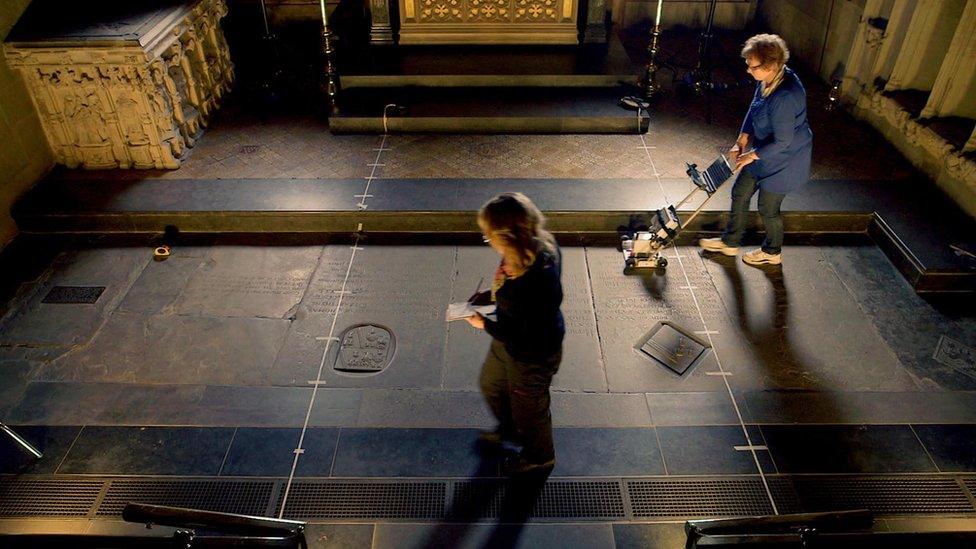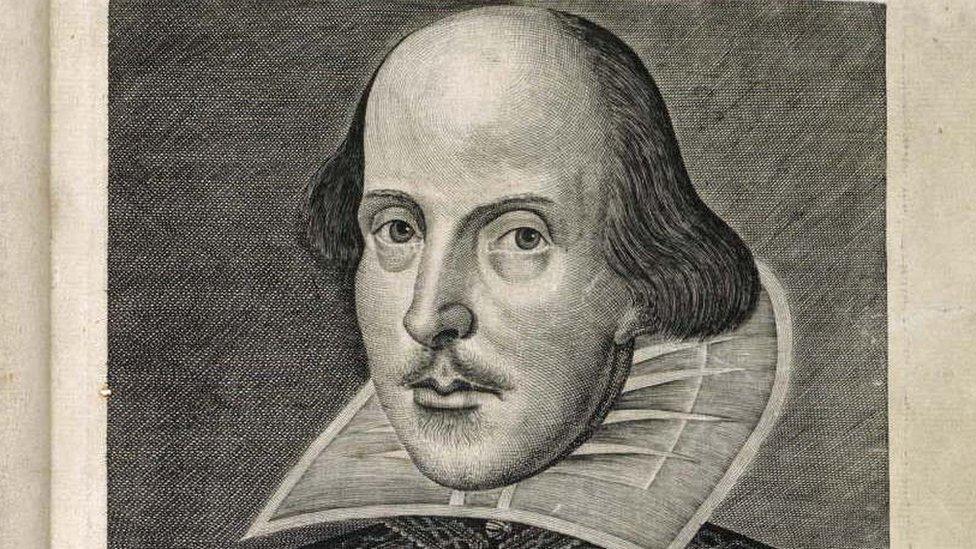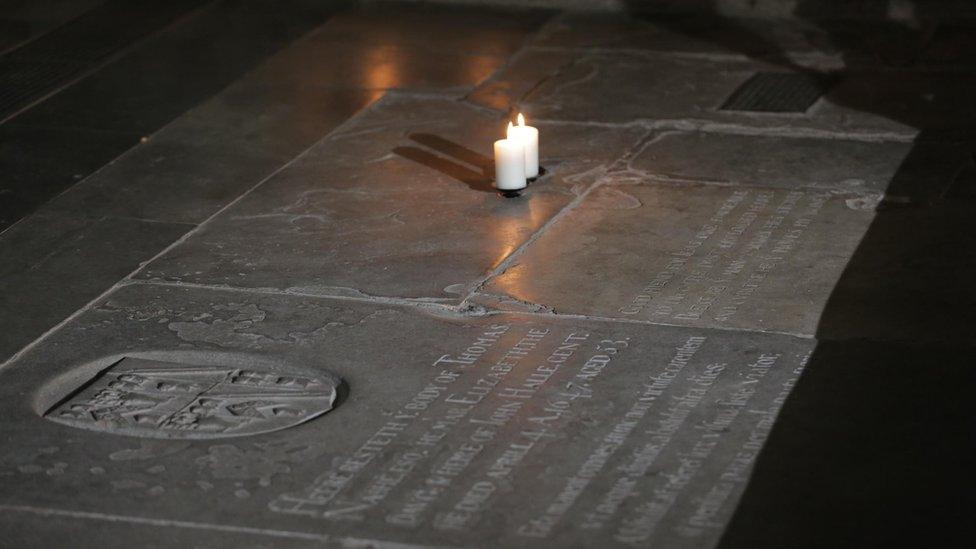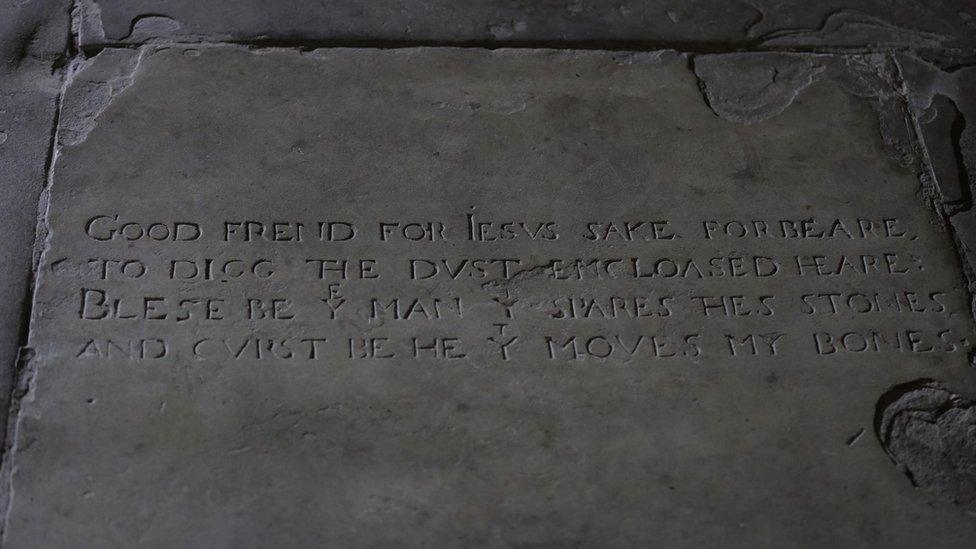Shakespeare's skull 'probably stolen' from Stratford grave
- Published

Archaeologists used a hi-tech scanning machine in the first investigation of its kind
A hi-tech investigation of William Shakespeare's grave has concluded his skull was probably stolen.
The discovery gives credence to a news report in 1879, later dismissed as fiction, that trophy hunters took the skull from his shallow grave in 1794.
A team used a ground-penetrating radar (GPR) scan to look through the grave at Holy Trinity Church in Stratford in the first archaeological probe of the site.
It allowed investigators to see below ground without disturbing the grave.
Archaeologist Kevin Colls of Staffordshire University, who carried out the project with leading geophysicist Erica Utsi, concluded: "We have Shakespeare's burial with an odd disturbance at the head end and we have a story that suggests that at some point in history someone's come in and taken the skull of Shakespeare.
"It's very, very convincing to me that his skull isn't at Holy Trinity at all."

Investigators found Shakespeare and his relatives were not buried in a large family vault, but in shallow graves beneath the church floor

The scan of Shakespeare's grave allowed investigators to look below ground without disturbing it
The investigation was carried out to coincide with the 400th anniversary of Shakespeare's death.
The documentary Secret History: Shakespeare's Tomb will be shown on Channel 4 on Saturday 26 March at 20:00 BST.
The playwright's final resting place has long been the subject of argument among historians and archaeologists, because it is too short for an adult burial.
It also carries no name, only the chilling curse: "Good friend, for Jesus' sake forbear, To dig the dust enclosed here. Blessed be the man that spares these stones, And cursed be he that moves my bones."

Key findings of the investigation
Evidence of a significant repair to the head end of the grave, leading to the theory that it was needed to correct a sinking of the floor possibly caused by a previous disturbance
The repair gives new credence to a story published in The Argosy magazine in 1879 claiming Shakespeare's skull was stolen from his shallow grave
The survey found the playwright, his wife Anne Hathaway and other relatives were not buried in a large family vault deep underground, as has long been thought, but in shallow graves beneath the church floor
Shakespeare and his wife's graves are less than a metre deep
His grave was found to be significantly longer than his short stone - extending west towards the head end, making it the same size as the other family graves
The GPR also found no evidence of metal in the area of the grave, such as coffin nails, suggesting they were not buried in coffins but simply wrapped in winding sheets, or shrouds, and buried in soil

Investigators went to another church, St Leonard's, in Beoley, Worcestershire, where legend has it a mysterious skull in a sealed crypt is that of Shakespeare's.
A forensic anthropological analysis revealed it to belong to an unknown woman who was in her 70s when she died.
Mr Colls said: "It was a great honour to be the first researcher to be given permission to undertake non-invasive archaeological investigations at the grave of William Shakespeare.
"With projects such as this, you never really know what you might find, and of course there are so many contradictory myths and legends about the tomb of the Bard.
"The amazing project team, using state-of-the-art equipment, has produced astonishing results which are much better than I dared hoped for, and these results will undoubtedly spark discussion, scholarly debate and controversial theories for years to come. Even now, thinking of the findings sends shivers down my spine."

The chilling curse that appears on Shakespeare's grave
The Rev Patrick Taylor, of Holy Trinity, said he was "not convinced that there is sufficient evidence to conclude that his skull has been taken".
"We intend to continue to respect the sanctity of his grave, in accordance with Shakespeare's wishes, and not allow it to be disturbed.
"We shall have to live with the mystery of not knowing fully what lies beneath the stone."